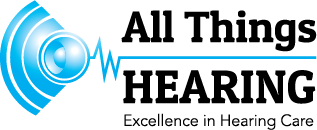Are you looking for a Comprehensive Hearing Test Mount Gravatt?
Ready to take the first step towards better hearing?
Let’s talk!
Connect with us today! Fill out the contact form below to schedule your personalised hearing consultation at All Things Hearing. Our expert team is committed to guiding you on your journey to improved hearing health. Don't wait to enhance your quality of life. Reach out now – we're here to listen and help!
Follow us:
A comprehensive hearing test evaluates your complete auditory system through multiple specialized examinations. You'll sit in a soundproof room wearing headphones while responding to various tones and speech patterns. The evaluation includes pure-tone testing, speech recognition, and tympanometry to check your eardrum's movement. Results are plotted on an audiogram showing your hearing range across different frequencies. Understanding these detailed assessments can help you take control of your hearing health.
What to Expect During Your Hearing Assessment
When you arrive for your hearing assessment, a licensed audiologist will guide you through several tests in a quiet, soundproof room. You'll wear headphones and respond to different tones and frequencies by pressing a button or raising your hand. The audiologist will also conduct speech recognition tests to evaluate how well you understand words at various volumes.
Your assessment may include tympanometry, which measures your eardrum's movement using air pressure. The audiologist might examine your ear canal with an otoscope to check for blockages or visible issues. Additional tests may evaluate how well sound travels through your bones. After completing these evaluations, your audiologist will explain your results using an audiogram and discuss any necessary treatment options or hearing solutions.
Types of Tests in a Complete Hearing Evaluation
A complete hearing evaluation involves several key tests that work together to create a comprehensive picture of your hearing health. Your audiologist will conduct pure-tone testing to determine the softest sounds you can hear at different frequencies, using both air and bone conduction methods. Speech recognition testing measures your ability to understand words at various volumes, while speech discrimination testing evaluates how clearly you can distinguish between similar-sounding words.
You'll also undergo tympanometry, which checks your middle ear function by measuring eardrum movement and middle ear pressure. Additional tests may include acoustic reflex testing to assess how well your ear muscles respond to loud sounds, and otoacoustic emissions testing to evaluate your inner ear's hair cell function.
Understanding Your Test Results
Your hearing test results are displayed on an audiogram – a detailed graph showing how well you hear different pitches and volumes. The vertical axis measures sound intensity in decibels (dB), while the horizontal axis shows frequencies in Hertz (Hz). Normal hearing typically falls between -10 and 25 dB across all frequencies.
If your results show higher numbers, you may have hearing loss. Mild hearing loss ranges from 26-40 dB, moderate from 41-70 dB, and severe from 71-90 dB. Anything above 91 dB indicates profound hearing loss. Your audiologist will explain which frequencies are affected and whether the loss is conductive (outer/middle ear problem) or sensorineural (inner ear/nerve problem). They'll use these results to recommend appropriate treatment options, from hearing aids to medical interventions.
Signs You Need a Hearing Test
While understanding test results is important, recognizing when you need a hearing test can prevent further hearing damage. If you're frequently asking people to repeat themselves or struggling to follow conversations in noisy environments, these are key warning signs. You may also notice that TV or radio volumes need to be louder than before.
Watch for other indicators like difficulty understanding phone conversations, trouble hearing high-pitched sounds, or feeling exhausted after social gatherings due to straining to hear. Ringing or buzzing in your ears, known as tinnitus, can also signal hearing issues. If you work in noisy environments or you're over 60, you should get regular hearing screenings. Don't wait until these symptoms become severe – early detection leads to better treatment outcomes.
Benefits of Regular Hearing Screenings
Regular hearing screenings provide multiple life-changing benefits that extend far beyond just detecting hearing loss. By getting your hearing checked regularly, you'll catch potential issues early, preventing further deterioration and enabling prompt treatment. These screenings can also reveal underlying health conditions like cardiovascular problems or diabetes that sometimes manifest through hearing changes.
You'll maintain better social connections when you address hearing problems early, as untreated hearing loss often leads to isolation and communication difficulties. Regular screenings help protect your cognitive health too, as research shows hearing loss can contribute to memory problems and dementia. You'll also preserve your balance and spatial awareness, which rely partly on proper auditory function. Additionally, you'll save money long-term by addressing minor hearing issues before they become major concerns requiring more extensive interventions.
Disclaimer
The content on our site is purely for education and should not be seen as an endorsement or recommendation of any treatments or products without a thorough hearing assessment and evaluation. Before starting any treatment, users should get advice from a professional and be fully aware of any potential side effects or risks related to the procedures. Any products we mention cannot be purchased by the public without first consulting a hearing health expert.
